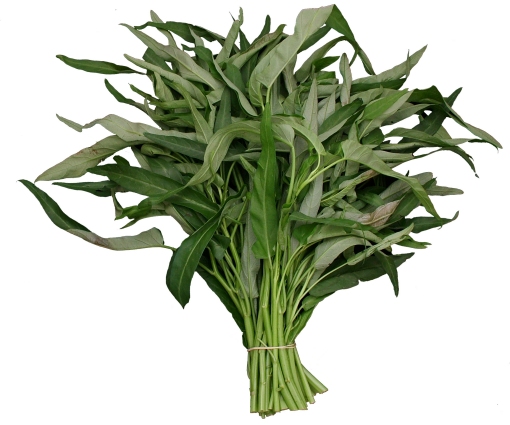
Kang Kong (Ipomoea aquatica)

Otherwise known as…
Water convolvulus, water spinach, swamp cabbage, ong choy, hung tsai, rau muong.
General information
Kang kong is closely related to sweet potato as well as to 'morning glory', the climbing vine with large purple flowers that grows as a weed in the warmer parts of Australia. Like its relative, kang kong can also sometimes escape from cultivation and the plant is considered a weed in some places. However, it is an extremely popular and common vegetable in many parts of south-east Asia.
Kang kong prefers damp conditions, flourishing along the banks of streams and boggy areas. The plants long, pale green hollow stems float on top of the water or creep along damp ground. The leaves are darker green and can be long and slender to short and heart shaped depending on variety.
Cooking tips
Kang kong has a mild flavour and can be used raw in salads as well as lightly cooked. In many parts of Asia it is eaten stir fried with chilli, garlic or a savoury paste. When preparing, it is best to strip the leaves from the stems and slice the stems diagonally. Add the stems first and stir fry for a minute or so before adding the leaves. Cook only until the leaves are just wilted. The slightly slippery texture of the cooked leaves contrasts well with the firm, hollow stems.

